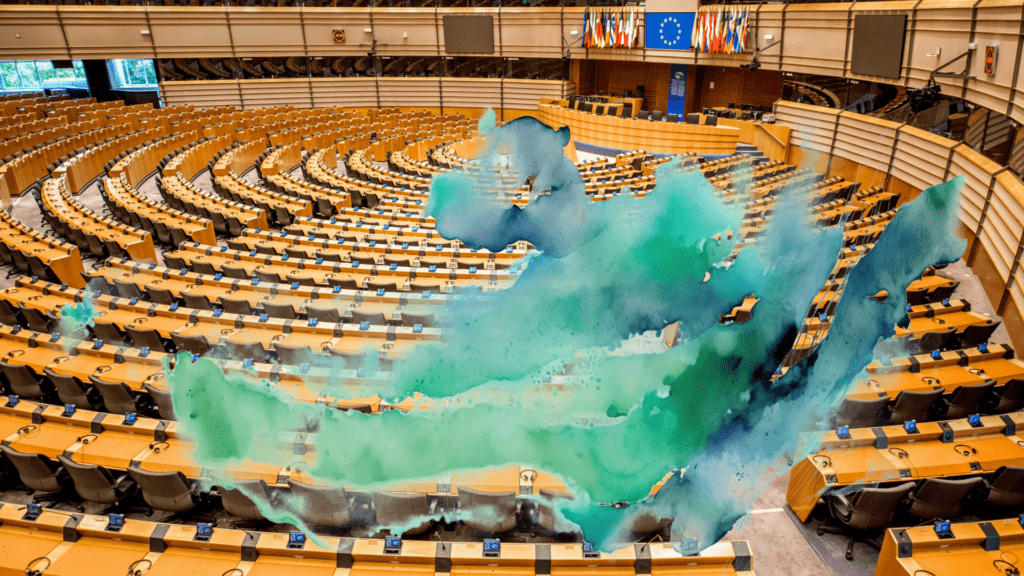
Nature Restoration Law: key issues and challenges
The first major EU legislation on biodiversity seeks to restore degraded marine and terrestrial areas to achieve environmental, social and economic benefits. It was approved in the European Parliament, but opposition from several member countries slowed down its approval in the last phase of processing. This nature restoration law will enter into force once it has received the Council’s approval, after reaching a consensus.

A law to restore the seas
Only 10% of the world's seas and 17% of the world's land are protected. If we reduce the map and focus only on the territory of the European Union (EU), we find that less than 20% of habitats are in good condition.
To reverse this situation, in June 2022 the European Commission proposed the creation of a Nature Restoration Law that aims to promote the recovery of ecosystems, both marine and terrestrial, and to take a step towards achieving the EU's climate and biodiversity targets.
This law, the first of its kind to be proposed by the European institution, aims to restore at least 20% of the European Union's degraded marine and terrestrial areas by 2030, 60% by 2040 and 90% by 2050.
According to the European Parliament, this measure would regenerate ecosystems in poor condition, contribute to achieving the climate and biodiversity objectives set by the EU and improve food security. In addition, the Commission estimates that its application would have a return of between 8 and 38 euros for each euro invested, so its benefits would also be economic.
If approved, the agreement would be binding on each of the member states, which would have to develop national plans adapted to their own objectives, realities and needs.

Votes for and against
However, the future of the law is still unknown.
It was approved in the European Parliament with 329 votes in favor, 275 against and 24 abstentions, but was blocked in its third and final phase of processing, that of the Council (made up of representatives of the governments of each country).
Behind this twist in the script is Hungary, a country that changed its vote at the last moment and joined the states against the law: Austria, Italy, Poland, the Netherlands, Belgium, Finland and Sweden. The arguments of this bloc revolve around the idea that the regulation would be detrimental to the agricultural sector.
The votes in favor were cast by Spain, Germany, Bulgaria, Cyprus, Croatia, Denmark, Slovenia, Estonia, Ireland, Lithuania, Luxembourg and the Czech Republic.
In the near future, it will be necessary to redefine the objectives and conditions of the law in order to reach a consensus that will facilitate its approval.

Its impact on the oceans
The proposal to create a law for the restoration of European ecosystems is born in a context determined by climate change and the biodiversity crisis. A context in which the oceans are facing problems such as overfishing, pollution and the spread of invasive species, which bear the imprint of human activity and have a serious impact on ecosystems.
As the regulations state, the regeneration of degraded ecosystems is essential to improve the state of the oceans, conserve their biodiversity and meet the EU's climate objectives.
"The Nature Restoration Act could generate improvements for ocean ecosystems. To begin with, its approval would entail carrying out more studies to assess their situation. This basic knowledge alone would be very useful and valuable," says Jordi Pagés Fauria, Ramón y Cajal researcher at the Centre d'Estudis Avançats de Blanes (CEAB-CSIC).
These studies would make it possible to see in which areas restoration is necessary and also possible, which would facilitate the design of appropriate and efficient restoration plans. According to the CEAB-CSIC researcher, these plans are interesting on a local scale, but their complexity increases when they are given broader objectives.
"Some problems are easier to solve than others, in the sense that they are more attackable on a small scale. For example, pollution. In this sense, a good job has been done in improving most of the pollution indicators on the Spanish coast in general or, more specifically, on the Catalan coast. From the 1990s to the present day, the level of nutrients, phosphorus, nitrogen and metals has been reduced, mainly thanks to the improvement of wastewater treatment plants," explains Pagès, adding that plastic pollution, on the other hand, has increased.

The importance of passive restoration
However, the researcher also sees difficulties for restoration to work if it is not accompanied by other measures that put an end to the causes of the problems, such as climate change or overfishing.
"At the scientific level, it is complicated to get the ecosystems of a place that is or has been degraded to return to their initial state. Even if restoration work is carried out, many of the ecosystems will not come back. In this sense, I am a bit critical because in the sea there are quite a few ecosystems that will not be restored if the pressure that endangered them is not eliminated," explains the researcher.
An example is found in seagrass meadows, such as Posidonia oceanica, a species whose restoration is slow and very complex. "If restoration is achieved, it is with minimal rates per year and thanks to the use of a large amount of economic resources. That is why we always say that in this type of ecosystem it is more important to conserve than to restore," Pagès adds.
"Encouraging passive restoration (that which eliminates or minimizes the causes of degradation, allowing the ecosystem to recover on its own) is very interesting. Active restoration is more useful in local projects, where an economic impact can be achieved," he concludes.

The future of ocean restoration
To understand what paths the future of ocean restoration may take, it is important to bear in mind that the EU's concern about this issue has been growing in recent years, which has led to the approval of different initiatives.
One of these is the EU Mission "Restore our Ocean and Waters", which was launched in 2021 to "protect and restore the health of our oceans and waters by 2030 through research and innovation, citizen engagement and investments in the blue economy". The ultimate goal of the mission is to contribute to achieving climate neutrality and restoring nature.
This and other missions related to sustainability in Europe are channeled into different projects involving companies, research and training centers, local authorities and many other actors from all member states.
In the case of the EU Mission 'Restore our Ocean and Waters', actions focus on protecting and restoring biodiversity, reducing pollution and supporting a sustainable blue economy in all seas, from the Baltic to the Cantabrian to the Mediterranean. The ambitious targets are expected to yield concrete and tangible results by 2030.
Support from ports
Beyond the walls of the European institutions, the law finds detractors and defenders among the rest of the agents involved in the marine environment.
An example is the European Sea Ports Organisation (ESPO), which in March 2023 showed its full support "for the objectives of halting and reversing the loss of biodiversity and habitats in Europe through restoration efforts at the European level".
The ports of Europe, the organization points out, have extensive experience in nature restoration work.
Because of their position, as a nexus between the sea and the coast, they have an important role and also a responsibility to protect biodiversity. In addition, they also have a need to develop measures to protect their infrastructure from the impacts of climate change.
"Europe's ports are striving to strike a balance between socio-economic interests and sustainability objectives. [...] Contributing to safeguarding biodiversity through the protection and management of natural areas is an essential part of these efforts," ESPO says.
In recent years, numerous nature restoration plans have been developed in ports. "We can find an example in the naturalization work on the hard structures of harbors, such as breakwaters or jetties. These usually have smooth walls, but some initiatives add elements to make them rougher, more similar to rocks and elements found in nature, so that animals and all kinds of organisms can settle," Pagès explains.
Among ESPO's demands in relation to the law are that it be aligned with other existing legislation.
After the "no" of the eight countries in the EU Council, a new range of possibilities opens up in which the current proposal may undergo significant changes and modifications, so that the future of the Nature Restoration Act is still to be determined.



